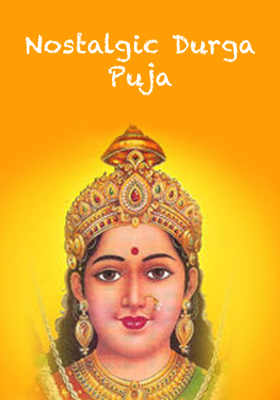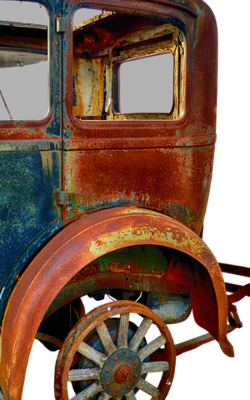Some Words Pot Artist In W.B.
Some Words Pot Artist In W.B.


Today I am writing a big answer after many days. Read with patience. First of all, I would like to thank the readers.
In search of 2019 painter pot artists, I found the Bankura and Purulia Patua communities and pot songs which are two districts of West Bengal. I toured the villages under several police stations. Their lives seemed to want to find words and history. They were originally from Jharkhand and came from there.
Such curiosity will help to create the form of Bengali and Bengali culture and culture. The people of this community basically draw the pot and tell the story of the pot by singing through the display of the pot. In Bengal, the people of the Vedic community used to sing this pot in the villages. Pot songs were one of the elements of entertainment for the people of Bengal on various religious and social occasions. Patua music used to be popular in the entire Radha region but now it can be heard in Birbhum, West Midnapore, Nayagram, Burdwan and Murshidabad districts of Pingla block of Midnapore. Nayagram in the Pingala block still holds this ancient tradition firmly. About fifty to fifty-five families are associated with pottery and Patua music.
Fifty-five families in Bankura are associated with this artist. This time I will tell the legendary mythology of the painter Patuas.
According to the wonder legend mythology, Patuara is a descendant of Bishwakarma. After Devadidev drew his picture without Mahadev's permission, the ancestors of the Patuas tried to hide it with a brush to hide it, but Mahadev saw it. They fell into the caste under the curse of Mahadev for sticking the brush and were ordered to do ‘Muslim rituals’ and ‘Hindu religion. From then on, the painter Patuara prayed like a Muslim and painted pictures of gods and goddesses like a Hindu and sang their praises.
A similar story is found in the tenth chapter of the Brahmavaivartta Purana about the origin of the Patua or Chitrakar nation. In the womb of Brahmanbeshi Bishwakarma, nine sons were born in the womb of Gopakanya Bakshi Apsara Ghritachi. These nine sons are Malakar, Karmakar, Shankhakar, Kundibak (Tantubaya), Kumbhakar, Kanshyakar, Sutradhar, Chitrakar and Swarnakar. Among these nine sons, the painter is the ancestor of the Patuas. The Brahmins followed a certain pattern and adopted a unique style of painting, so they fell into the caste of Brahmasapa. From then on, they became neither Hindus nor Muslims and lived a marginal life. Even though they pray, their names are the same as Hindus. Although there are many similarities between the Muslim customs and the Patuas, there is no shortage of followers of Hindu customs among them. From then on, they became neither Hindus nor Muslims and lived a marginal life. Even though they pray, their names are the same as Hindus. Although there are many similarities between Patuas and Muslim customs, there is no shortage of followers of Hindu customs. The Patuas of Kalighat were retirees, most of them belonging to the Sutradhar community.Pot's songs are basically of three types: Lilakahini, Panch Kalyani and Gopalan. Some of the notable pot lyricists are Dukhushyam, Rani Chitrakar, Gauri Chitrakar, Pulin Chitrakar.
Patuas lived in Purulia, Medinipur, Howrah, Hooghly, Burdwan, Birbhum and Bankura districts of West Bengal, India. Some people think that the name Patuatola in Kolkata, West Bengal is derived from 'Patua'. From this, it can be inferred that at one time the influence of Patua's roaming area and pottery was wide.
The word pot originates from the Sanskrit "patta". Which means cloth. Pot is a very common medium in ancient folk art. This pot carries the tradition of ancient Bengal and a large part of the Bengali-speaking areas around Bengal.
Patachitra is a traditional art of Bengal and Orissa. Patchitra is also found in some parts of Rajasthan but it is not as rich as Bengal or Orissa. I will not only discuss the Bengali paintings in detail but also the Orissa paintings.
In the first century after the birth of Christ, Buddhist monks used to display a special pot made of the biography of Buddha and the story of his pre-birth birth called a mockery pot.
In the Harivansh texts written in the second century,
Patachitra is mentioned in Abhijnana Shakuntalam and Malvikagnimitram by Kalidasa in the 4th century, Harshacharita by Banavatta in the 7th century and Uttaramcharita in the 8th and 9th centuries.
In the sixteenth century, the pot was used in Navadvipa to spread the message of Sri Chaitanyadev. The famous sixteenth-century poet Shri Kavikankan Mukundaram Chakraborty wrote the poem Chandimangal. ‘Someone in the city says the pot fell.’There are two types of pots commonly used in Bengal. Square and long or long. The self-contained single pots of Kalighat are square pots and the intertwined pots are polyps or long pots. Patuya narrates the story of the pot through relevant songs, recitations and narrations while showing a story through multiple series of paintings and showing the pot wrapped around a stick. They are not only painters but also lyricists, composers and singers.
The origin of Chowkpat is probably related to the establishment of the temple at Kalighat. The temple at Kalighat was established in the seventeenth century. Pilgrims flock to the temple of Goddess Kalima, the presiding deity of Calcutta, the city of Kali. The pottery of Kalighat developed according to the needs of the pilgrims. Initially, the painting of gods and goddesses was the subject of the pot, but later social issues also became the subject of the pot. The various injustices of the nineteenth-century Anglo-Bengali society came to the fore in a calm manner at Kalighat. For the Bengalis who suddenly became rich, then entertainment means bijibilas, bulbul fights or cat marriages. Another name for the nobility that floats in the stream of sura with Saheb Memed. At that time the newly educated community of the country had no appreciation for native painting. This neglected, humiliated native painting took place in the inner palace. Pots became essential in daily worship and religious observances. Patron of the pot over timeThe silent language of the inner palace seemed to become eerie in the line of the pot. The painters continued to sharpen the adultery of educated husbands or brothers. No matter how much the contemporary art critics looked down on him, he was extremely popular with the common people. However, this glory did not last long. Its lifespan was about one hundred years. Between 1920 and 1930, the pot of Kalighat became history. The availability of print media hastened the demise of this industry. The story is told through a series of pictures. Patua makes the story clearer with the help of songs and recitations. Eminent folklorist Borhanuddin Khan Jahangir, while describing the pictorial features of the jaraan pot, wrote, ‘This pot has two dimensions: volume, mass, without perspective; Two-dimensional ornamental figure on equal ground. This section is from the Deccan of Orissa, along with the volume of the earthen idol, the stationary mass. চোখ The eyes do not go away in the wrapped cloth, the eyes turn from the ground to the picture, and the picture is a combination of various scenes. The source of the wrapped pot is definitely the wall painting of Ajanta, Andhra, the nearest neighbour of that painting.
Although the painting can be divided into two parts according to the size, the Bengali painting can be roughly divided into four parts based on the subject. 1. Birth certificate of Santal tribe and the common magic or eye-catching pot among them, 2. After the death of Yamraja's judicial affairs, 3. Gazipat, the hero of Muslim religious warriors, and 4. Hindu Purana, Ramayana, Mahabharata, Mangalkavya, Radhakrishna's Leela and Chaitanyalila.
Indigenous painters from Purulia, Bankura narrate the birth story of the Santals on the basis of Santali legends. Among the Santal, Bhumij and Vedia tribes there is a practice of Jadupat or Chakshudan Pot. Patuars of this class knows the magic of their pot from this belief is called jadupat. When someone from an indigenous family dies, these potters quickly paint a picture of him. Although the image is complete in all respects, it does not have the jewel in its eye. The painter shows the picture and tells the relatives of the deceased that the soul of the deceased is wandering aimlessly in the afterlife. Since he has no eyeballs, he does not understand how and where to go. If he is given appropriate money and rewards, he can put the gem in the picture so that the dead person can find his way. Simple aborigines believe this story and complete the painting by drawing eyeballs with as much money and reward as possible to the painter. The magic also depicts images of various worldly gods and goddesses, including animals and birds. Patuara plays the role of a folk teacher by skillfully painting the image of reward for righteous deeds or punishment for unrighteous deeds in this life. Jumpat is often painted at the end of any wrapped pot. According to experts, its ‘writing style is rude. The importance of Jumpat is certainly not as a work of art, but as a carrier of ethics
Drawing method: Patuaras derive various colours from nature from their traditional knowledge.
Yellow colour is collected from turmeric or alamati or from the roots of the yellow tree. From the hills to the yellow soil of the Jharkhand region.
The green colour is collected from the sap leaves or neem leaves or the juice of spinach. The green colour is made by drying and crushing the bel leaves.
Purple colour is made from black or ripe pomegranate.
The blue colour is made from Aparajita flower or mulberry.
It is made by mixing a little blue with chalk white colour.
The brown colour is made by mixing pieces of brown with lime or alamati.
The reddish colour is made from terracotta or red clay. The red colour is obtained from ripe telakucha. The leaves of the Sajna tree can be made red in colour. Bhusokali is scraped from the terracotta body for its black colour. The black colour is also made by burning the roots of the gab tree.
However, the source of this colour can be seen in different districts. The colour is mixed with earthenware or coconut.
Patuadera brushes are made from baby goat neck hair or belly hair. For fine brushes, however, squirrel fur or beige tail hair is used. Nowadays, however, Patuara is relying more on paint brushes bought from the market.
Patuara is quite experienced in what colour is obtained by mixing any colour with any colour or how it increases the brightness and durability of the colour. Bell, gum, sage or neem glue are mixed with the colour to capture the colour better. Neem gum also protects the skin from insects. In many cases, tamarind soaked and boiled thakathake kai or egg yolk is also used for colouring.
Usually, large cotton cloth is coated well by mixing dung glue soil etc. Then it is dried in the sun and painted on it.
Types of pots:
There are basically two types of pots; an Awareness pot and a wrapped pot
Alert Pot: These are small in size. A foolscap would have been slightly larger than the paper. There was only one picture drawn on it. Such as the pot of Kalighat.
Wrapping pot: The cloth in this figure is eight to twenty-five cubits long and two to two and a half cubits wide. This type of pot was called 'wrapped pot' because the pot was twisted or wrapped around a wooden bar. It used to draw pictures continuously. Patuwara used to open the wrapped pot and describe the picture continuously through songs. The wrapped pot of Medinipur is famous
Movies: Movies are fictional paintings of gods and goddesses painted on the surface of the former Durga idol, which is mainly hemispherical. It is also known as Durgachala or Devichal. This painting has its own outline and stylistic foundation. In the language of the artists, this film is 'Pot Lekha', which is a special genre of Bengali pot paintings. Such a special collection of paintings in the Sutradhar society of Hatserandi in Birbhum districtSeen, which is called Durga Pot. However, instead of the Durga idol, Durga is worshipped here. There is a semicircular film on the Durga pot. Such films depict Rama, Sita, Shiva, Nandibhrungi, Brahma, Vishnu, and Shumbha-Nishumbha. The uniqueness can be noticed in the film Rajarajeshwari Durga of Krishnanagar Rajbari. In the film here, Panchanan Shiva is in the middle and Parvati is on the side, Dashmahavidya is on one side and Dashabatar is on the other side. The former director of the Indian Museum said that there are different types of films in Bengal and different ones can be noticed among them. Mathchauri Chali's film depicts the goddess from top to bottom, one below the other. Again, the former Bengali language, they are different in different ways. On the other hand, there are paintings on the American side as well.
Yampat: In Yampat, scenes of the torment of hell of a convicted person and the bliss of a virtuous person are painted in the judgment of Yam or Dharmaraja. Patuara plays the role of a folk teacher by skillfully painting the image of reward for righteous deeds or punishment for unrighteous deeds in this life. Jumpat is often painted at the end of any wrapped pot. According to experts, its ‘writing style is rude. The importance of Jumpat is certainly not as a work of art, but as a carrier of ethics. Chakshushman Pot: Indigenous painters from Purulia, Bankura narrate the birth story of the Santals on the basis of Santali legends. Magical or eye-catching pottery is prevalent among the Santal, Bhumij and Vedia tribes of Bangladesh. Patuars of this class knows the magic of their pot from this belief is called jadupat. When someone from an indigenous family dies, these potters quickly paint a picture of him. Although the image is complete in all respects, it does not have the jewel in its eye. The painter shows the picture and tells the relatives of the deceased that the soul of the deceased is wandering aimlessly in the afterlife. Since he has no eyeballs, he does not understand how and where to go. If he is given appropriate money and rewards, he can put the gem in the picture so that the dead person can find his way. Simple aborigines believe this story and complete the painting by drawing eyeballs with as much money and reward as possible to the painter. So another name for it is chakshudan pot. In magic, Patuara also paints pictures of various folk deities including animals and birds.
Gazir Pot: This is actually a Muslim pot. It describes the heroism and miraculous deeds of the Muslim warriors Ghazi and Pirs. However, even though it is a Muslim pot, the image of the tiger god Dakshinaraya or Banabibi can also be seen on this pot. These pots are indicative of the non-communal religious sentiments of the Patuas. In it Ghazi is sometimes seen fighting with the king of the Sundarbans; Never to be samasin on the tiger's surface; Sometimes a hat or a crown is worn on the head, wearing colorful pajamas or dhoti, a leather or triangular flag in one hand and a sword or fist in the other. Gazi's pot also displays pictures of various miraculous deeds about Manikpir, Madarpir, Satyapir, Kalufkir, Banabibi etc. Along with such religious beliefs, various jokes, colorful stories, caricatures and images of social misery are also painted.Sometimes owls, monkeys, cows, tigers, snakes, crocodiles and even plants find a place. Ordinary people who believe in folklore often use Patua and Patachitra for scrubbing. Many people also think that saving paintings at home is a way to save them from welfare and misfortune.
Folk pots: The most varied pots are folk pots. In comparison to the variety of subjects, this pot is a fair weight in comparison to the drawing style. Puranas, Ramayana, Mahabharata, Krishnalila, Manasamangal and other Mangalkavyas, narrations from Chaitanyajivan came to life in the hands of folk artists. Critics, fascinated by their artistic prowess, said, ‘There was no real qualitative difference between the feeling of a secular artist and the sense of guidance, which was dimensional.
Kalighat with its mythological story on the one hand and the popular pilgrimage site in the heart of the capital Kolkata on the other. As a result, crowds of people gather for various reasons at different times. The artists of the square pot of Kalighat are also a group of rural artists who came suddenly. They are potter-sutradhars and a few patua families. Mainly the artist groups of South 24 Parganas and Medinipur.
It is said that Khullatat Raja Basanta Roy of Pratapaditya built the temple at Kalighat and in 1896 Santosh Roy of the Savarna Roychowdhury dynasty rebuilt the temple. During this time the number of fans also increased. At that time, in search of a livelihood, a small group of rural artists tried to live in a new way. At the same time, the painters of Patua tried to get rid of caste. Attempts to create a simple address in the sense of 'neighborhood' in the heart of crowded Kolkata by resorting to labor-intensive cottage industries. That is, trying to get recognition as a center of trade as well as production. Along with the construction of Lakshmi Sara, Manasa Ghat, painted pots, colorful idols, toy dolls, chariot paintings, movies, small and big temples, the villagers also started decorating simple paintings on metal pots. At that time, the artists of Kalighat also understood the picture market.




























































